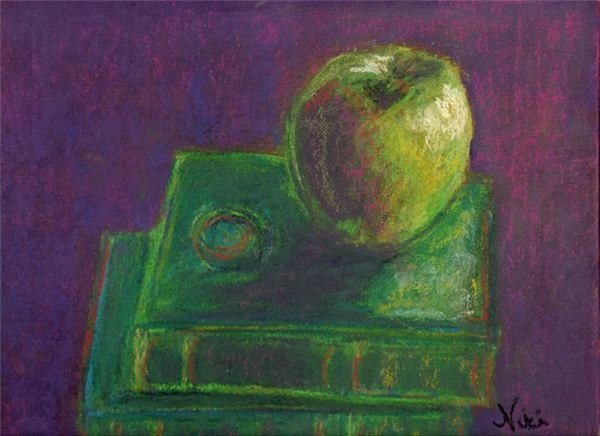Middle School Art Lesson: Still Life Paintings of Your History & Future
Objective: Students will use objects to create a still life painting that symbolizes what they’ve experienced in the past and what they hope to experience in the future.
Materials: Examples of still life art, painting materials (watercolor, oil or soft pastel, tempera paints, water soluble pencils or crayons all work well with minimum drying time), paper (suitable for choice of painting materials), masking or painter’s tape, boards, objects to arrange for still life composition
Lesson Procedure:
Note: Before beginning lesson, students should be asked to bring in a few items that symbolize their lives before the current school year and an object or two to represent what their hopes are for the future. The teacher should also have a few items to use as a sample arrangement (or for students who don’t bring in their own items).
Step One: Teacher will share examples of still life paintings, which often show objects that are part of artists’ everyday lives, or objects that symbolize emotions and beliefs. Examples of such paintings might include the following pieces:
Still Life with Skull by Paul Cezanne
Still Life with a Mandolin by Pablo Picasso
Still Life with Pheasants and Plovers by Claude Monet
Still Life with Bible by Vincent Van Gogh
As students view the examples, teacher will guide a discussion on what some of the objects in the paintings might have symbolized for the artists who painted them.
Step Two: To finish out the discussion, students can share some of the items they have brought in and discuss what the items represent in their lives. Students will then prepare for their paintings by taping papers to their boards. The teacher will then demonstrate how students can place their objects into a pleasing still life arrangement, noting the placement of objects.
Step Three: Students will place their own items into a still life arrangement, adding symbolic meaning by placing the objects they feel are most important into the foreground. Once objects are placed, students can work in their own styles to create still life pictures that they feel represent their own unique views of the past and the future. Teacher should encourage students who want to focus on realism to pay closer attention to value and overlapping shapes, allowing students who want to focus more on mood to emphasize color, pattern, and texture as they see fit.
Assessment: Once paintings are complete, invite students to share them with the class. If students are shy about sharing because of the personal nature of their paintings, teacher can assign a quick journaling activity for students to self-reflect on how their paintings symbolize how the past has shaped them as young adults and what they expect for the future.
Extension: Teacher can hang paintings for parents to view at the next open house event, or even invite parents to a “My History, My Future” still life art show reception!
